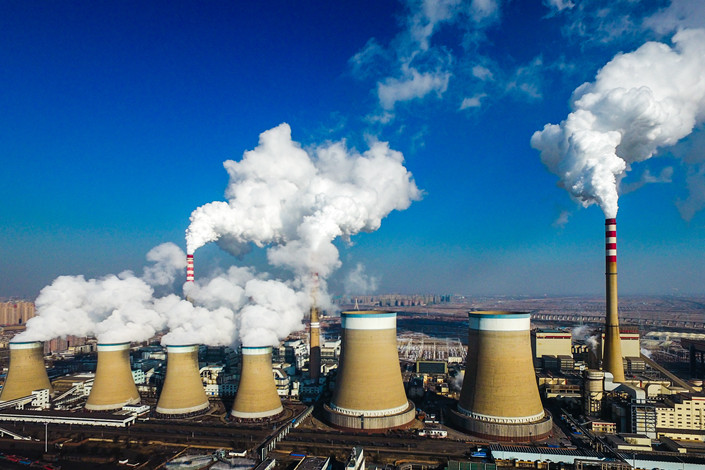Three-Quarters of China’s Coal Plants Fitted With Emission-Cutting Tech

While China may be the belching king of coal power, it at least has the cleanest coal plants, the government said this week, announcing that three-quarters of its coal power plants have been fitted with emission-reducing technology.
Cheap coal-fired power plants fueled by abundant domestic resources propelled China’s unprecedented economic transformation over the past four decades, though it also caused major environmental and ecological damage along the way. The government has moved to clean up its act in the last five years, especially around smog-choked northern cities.
This week it was able to celebrate another milestone in its clean-up effort. At least 700 gigawatts (GW) of power plants have been fitted with “ultra-low emission” technology, according (link in Chinese) to state news outlet Xinhua. This means the country has more than achieved its aim of fitting 580 GW-worth of plants with the technology two years ahead of schedule.
“At present, the emission levels of soot, sulfur dioxide and nitrogen oxides in coal-fired power plants in China are close to those of gas-fired power plants, which are stricter than the emission requirements of developed countries by more than 50%,” Zhu Fahua, the president of government think tank the State Power Environmental Protection Research Institute of China, explained in the Xinhua report.
But it is not just China touting its success in improving coal-fired plant efficiency. Melanie Hart of U.S. think tank the Center for American Progress recently wrote in a presentation, “If current U.S. regulatory trends continue, by 2020, every coal plant operating in the United States would be illegal to operate in China.”
The news received a cautious welcome from Lauri Myllyvirta, a senior analyst with Greenpeace’s Global Air Pollution Unit. “Our main concern is that many of the plants that have spent a lot of money on retrofits should have been retired, given China’s overcapacity in coal-fired power,” he said. “But for plants that keep running, applying strict emissions norms does make a difference [in reducing emissions].”
China continues to have significant overcapacity in power generation, largely due to inefficiencies across the electric grid. This leads to the continued use of older plants that would be redundant if China’s vast renewables capacity was better utilized, analysts say.
More coal capacity continues to come online, with Reuters reporting this month that more than $6.64 billion worth of new coal-mining projects were approved in 2018, a substantial increase on approvals in 2017. China also accounted for 11% to 24% of the global increase in methane gas emissions between 2010 and 2015, said a recent report published in Nature Communications.
Yet the push toward greener energy appears to be making headway overall. Last month Zhang Jianhua, the director of the National Energy Administration, told an audience at the annual gathering of elites in Davos, Switzerland, that coal consumption accounted for 60% of China’s total energy consumption in 2018, down 9.5 percentage points since 2012.
Contact reporter David Kirton (davidkirton@caixin.com)

- 1China Moves to Tighten Air-Quality Standards as Beijing Reports Best-Ever Skies
- 2China Threatens EU After Carbon Border Tax Takes Effect
- 3Gansu Ex-Vice Governor Jailed 15 Years for Bribery, Insider Trading
- 4 Exclusive: Wingtech Chair Vows to Regain Control of Nexperia After 100-Day Standoff
- 5Cover Story: How Resource Nationalism Is Redrawing the Global Mineral Playbook
- 1Power To The People: Pintec Serves A Booming Consumer Class
- 2Largest hotel group in Europe accepts UnionPay
- 3UnionPay mobile QuickPass debuts in Hong Kong
- 4UnionPay International launches premium catering privilege U Dining Collection
- 5UnionPay International’s U Plan has covered over 1600 stores overseas






